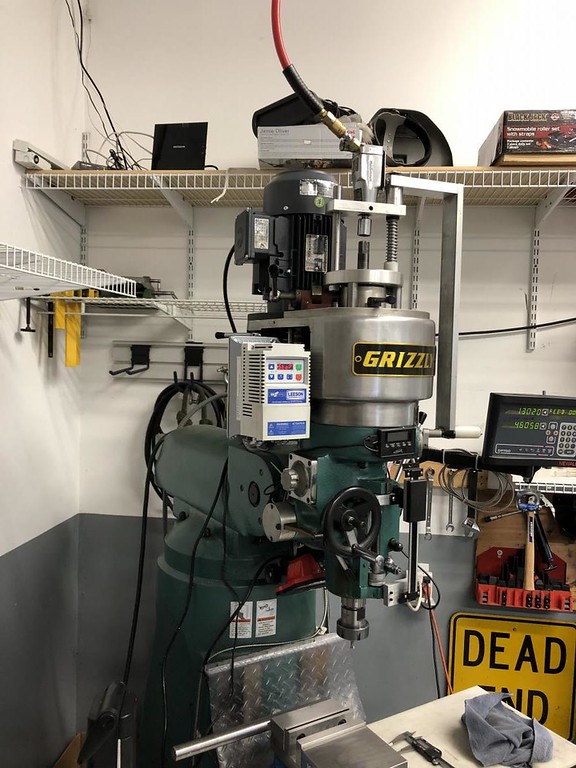I have been using a VFD on my Bridgeport mill for several years, and it works great. There are a couple of things to keep in mind however. First you can slow the motor way down by lowering the frequency, but there are practical limits. The motor torque drops off at lower frequencies, and I have found 20 Hz to be a reasonable lower limit for light machining.
The reason for the lower torque is quite simple, the output voltage must be reduced at lower frequencies. The reason for this is that the motor (and any iron core transformer) has an iron core in the armature, and iron will reach magnetic saturation (i.e. all the magnetic dipoles are aligned) at a particular product of time and voltage (volt*seconds). Saturation is a function of the type of iron and the physical size of the iron core, and the size is designed to handle 50 or 60 Hz voltage normally. If the iron saturates, the current will increase very rapidly, causing heating and frequently circuit breaker tripping or other overload conditions.
In an AC motor or transformer the current reverses after one-half cycle of the AC voltage, and the magnetic poles then begin to reverse direction heading toward saturation in the opposite direction. Since at lower frequencies the voltage is applied for longer time, the voltage must be reduced, thus reducing the motor torque.
At 30 Hz the voltage must be reduced to half the design voltage (on a 60 Hz motor) to be safe and avoid saturation. The resulting current will be about the same as at 60 Hz, so the power of the motor (Volts * Amps) is reduced to about half the rated value. A nominal 3 HP motor (at 60 Hz) will produce about 1.5 HP at 30 Hz, and about 1 HP at 20 Hz.
Likewise at higher frequencies than 60 Hz, the output voltage must be increased above the rated motor voltage to produce the rated power. At some point the motor may be damaged either from the higher voltage or operating at a speed above the design value. Perhaps the motor bearings or spindle bearings will reach their design limit, or the motor armature may be damaged by centrifugal force.




































































